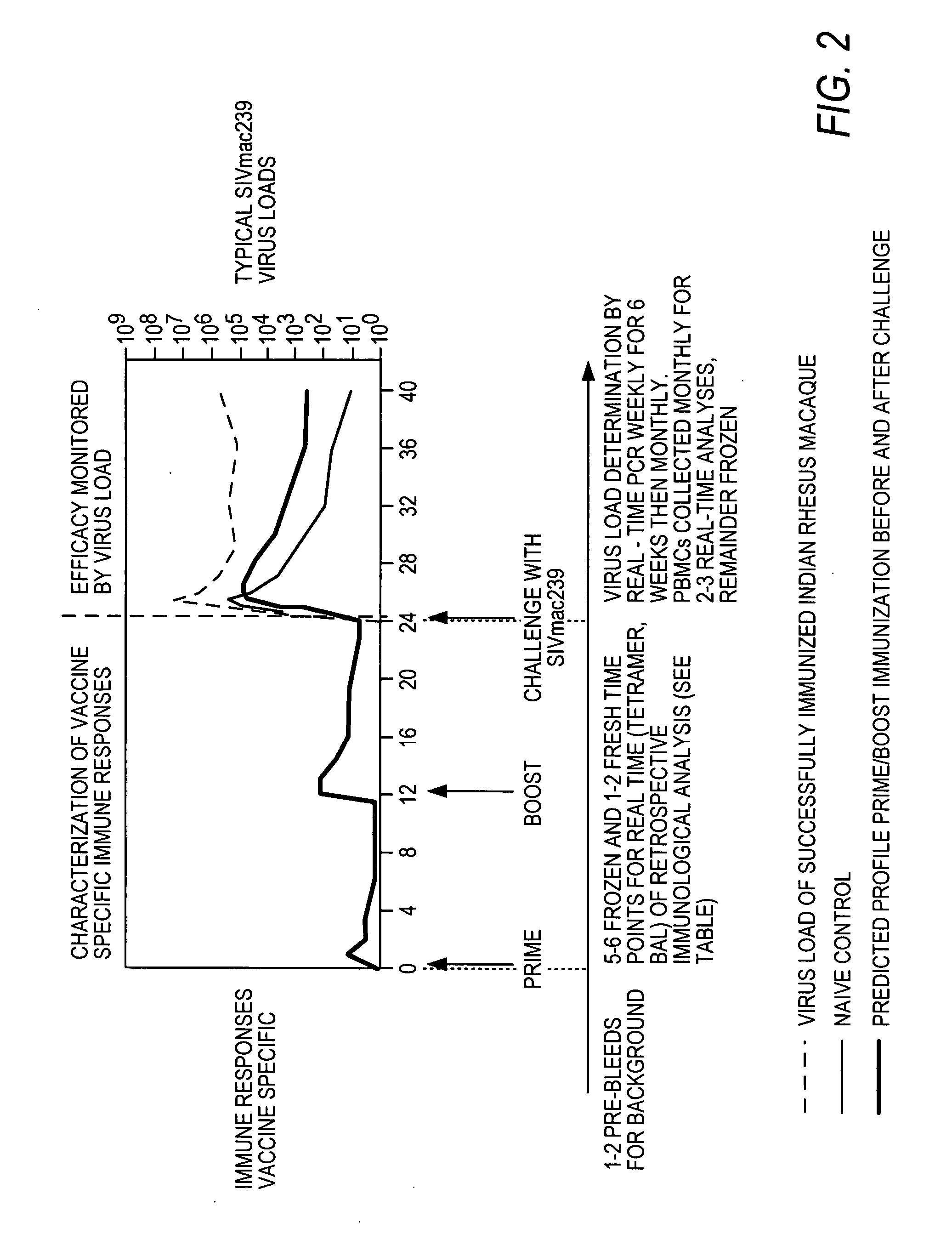Genetic adjuvants for viral vaccines
- Summary
- Abstract
- Description
- Claims
- Application Information
AI Technical Summary
Benefits of technology
Problems solved by technology
Method used
Image
Examples
example 1
Adjuvantation of AAV Vectors with Molecular Adjuvants
[0122] The following molecular adjuvants: IL-2, IL-12, Flagellin minimal TLR4 binding domain, CTA1-DD, and a version of fas antigen is cloned and expressed in an AAV1 vector which co-expresses SIV gag antigen. In the case of flagellin, a fusion construct is expressed between flagellin and SIV gag antigen. Each construct is evaluated for expression, adjuvant function, vector production and immune responses in mice. Vectors are further characterized for immunogenicity and efficacy in nonhuman primates, when given in combination with an AAV1 vector expressing SIV env antigen. IL-2 and CTA1-DD sequences are optimized and the vector expressing IL-2 is constructed and characterized
example 2
Experimental Summary for the Assessment of Adjuvants in the Non-Human Primate (NHP) Model
[0123] Immunological analyses upon pre-challenge time points (FIG. 2) for immunogenicity and characterization focuses upon the analysis of the breadth, specificity, memory phenotype and function of the immune responses elicited by the various vectors.
[0124] Time points are available for fresh analyses such as phenotype, tetramer (A*01 . . . etc.) and BAL analyses. Vials are frozen at most pre-challenge time points for archive and retrospective analyses.
[0125] The preferred challenge model for macaques is a repeated low dose mucosal challenge. Efficacy is assessed by virus load analyses and low level monitoring of specific vaccine generated responses.
TABLE 1Study designMamu-A*01Non-Mamu-A*01Adjuvant #148Adjuvant #248Vector sans adjuvant48DNA / Ad533SIVΔNef33Naïve33(or empty vector controls)Totals213354
(**subject to statistical verification)
example 3
AAV Adjuvanted Vector Design
[0126] A prototype for a rAAV vector expressing SIV gag-pro is presented in FIG. 3. A molecular adjuvant is cloned in to the vector as an Afe1 fragment with a maximum 1.1 kb size. Larger adjuvants can be accommodated if the CMV cassette is truncated. The resultant polyprotein expressed by the rAAV vector comprises SIV gag-pro, a foot and mouth disease (FMDV) virus 2A peptide and a molecular adjuvant.
[0127] The FMDV 2A peptide mediates cis-cleavage of the SIV gag-pro and molecular adjuvant (see, e.g., Furler et al., Gene Ther. 2004 June ;8(11):864-73). FMDV 2A proteases are also disclosed in, for example, U.S. Pat. Nos. 6,896,881; 6,893,866; 6,884,623; 6,632,800; 6,586,411; 6,531,136; 6,232,099 and 6,171,592.
PUM
| Property | Measurement | Unit |
|---|---|---|
| Immunogenicity | aaaaa | aaaaa |
Abstract
Description
Claims
Application Information
 Login to View More
Login to View More - R&D
- Intellectual Property
- Life Sciences
- Materials
- Tech Scout
- Unparalleled Data Quality
- Higher Quality Content
- 60% Fewer Hallucinations
Browse by: Latest US Patents, China's latest patents, Technical Efficacy Thesaurus, Application Domain, Technology Topic, Popular Technical Reports.
© 2025 PatSnap. All rights reserved.Legal|Privacy policy|Modern Slavery Act Transparency Statement|Sitemap|About US| Contact US: help@patsnap.com



